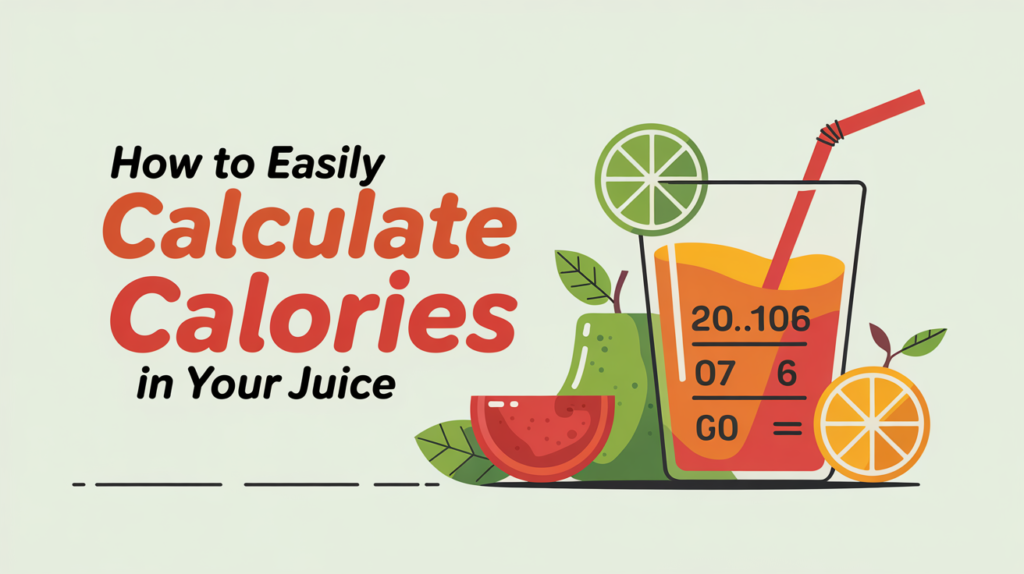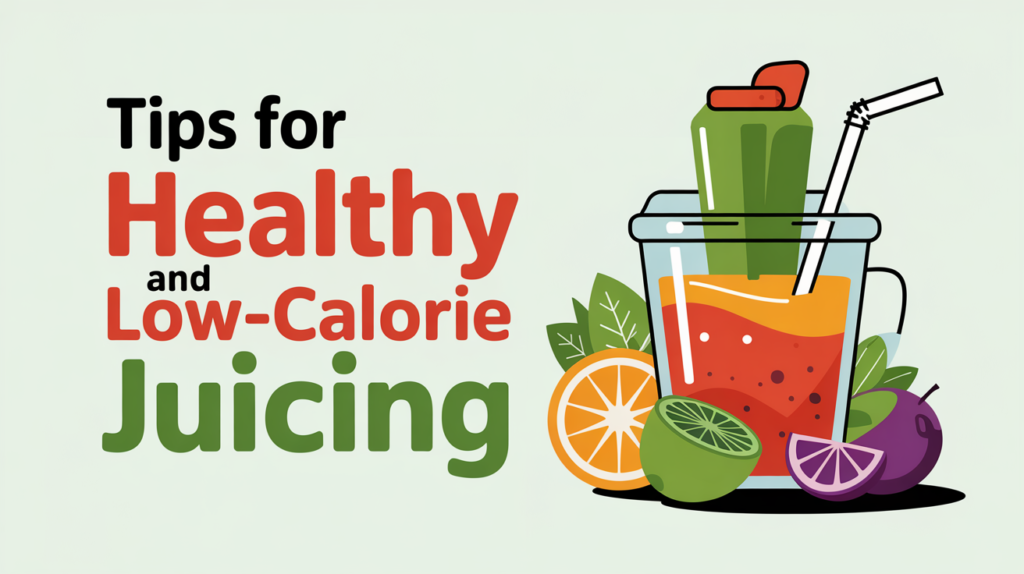Yes, counting calories while juicing can help you manage your weight and health better, especially if your goal is weight loss or maintaining a balanced diet. Being aware of juice calories prevents hidden sugar overload and supports mindful nutrition.
Juicing has become a popular way to boost health and get more nutrients quickly. But many people wonder: do I really need to count calories when I drink juice? It can be confusing because juices often feel healthy, yet some contain more sugar and calories than you might expect. This makes it tricky to know if you’re actually helping your body or accidentally adding extra calories.
If you’ve ever felt unsure about how much juice is too much, or if counting calories sounds complicated, you’re in the right place. This guide will clear up the confusion with simple advice, easy tips, and examples. We’ll explore when calorie counting matters for juicing, how to do it without stress, and even share low-calorie juice recipes. Let’s walk through everything step-by-step so you can enjoy juicing with confidence.
Contents
- 1 What Is Calorie Counting and Why Does It Matter?
- 2 How Juicing Affects Your Calorie Intake
- 3 When Is It Important to Count Calories While Juicing?
- 4 When You Might Not Need to Count Calories on a Juice Cleanse
- 5 How to Easily Calculate Calories in Your Juice
- 6 Benefits of Counting Calories While Juicing
- 7 Common Myths About Juicing and Calories
- 8 Tips for Healthy and Low-Calorie Juicing
- 9 Sample Low-Calorie Juice Recipes With Calorie Counts
- 10 Frequently Asked Questions (FAQs)
- 11 Conclusion / Final Thoughts
What Is Calorie Counting and Why Does It Matter?
Calorie counting means tracking how many calories you eat or drink every day. Calories are the energy your body uses to work, move, and grow. When you eat more calories than your body burns, you gain weight. When you eat fewer, you lose weight.
Counting calories helps many people control their weight and stay healthy. It gives a clear number to follow, making it easier to meet your goals. Without calorie awareness, it’s easy to eat or drink more than you think.
For example, the American Heart Association explains that knowing your daily calorie needs is key to a balanced diet.
If you are juicing, it’s important to remember that juices contain calories too. Ignoring these can add up and affect your health goals.
How Juicing Affects Your Calorie Intake
Juicing removes the fiber from fruits and vegetables, leaving mostly juice and natural sugars. This means juices can have more calories and sugar than whole fruits.
Juicing is different from blending. Blends keep the whole fruit or veggie, fiber and all, which slows down sugar absorption. Juices, however, can raise your calorie intake quickly without filling you up.
Here are common calorie counts for popular juices:
| Juice Type | Typical Serving Size | Approximate Calories |
|---|---|---|
| Orange Juice | 8 oz (240 ml) | 110 |
| Apple Juice | 8 oz (240 ml) | 120 |
| Carrot Juice | 8 oz (240 ml) | 80 |
| Green Juice | 8 oz (240 ml) | 50-70 |
(FDA data source: Nutrition Facts)
Because juices often contain fruit sugars (like fructose), calorie counts can rise quickly. This is why it’s important to be aware of what you drink. Juicing can add natural sugars and calories without you noticing.
When Is It Important to Count Calories While Juicing?
Counting calories while juicing matters most if you want to lose weight or keep your current weight. High-calorie juices can stop your progress if you drink too much without tracking.
Juices with a lot of fruit tend to have more calories because of their natural sugars. These can cause blood sugar spikes, making you feel hungry soon after. This can lead to overeating later.
If you use juicing as a meal replacement or a regular snack, knowing calorie content helps you avoid hidden calories. This supports a balanced diet and stops unwanted weight gain.
Experts at Harvard Health Publishing warn that too much fruit juice can add sugar and calories that harm your health.
On the other hand, if you juice only for vitamins and minerals and eat a balanced diet, counting calories might be less important. But if weight management is your goal, it’s best to keep track.
When You Might Not Need to Count Calories on a Juice Cleanse
Some people use juicing as a short-term cleanse or detox. During this time, the main goal is to give the body a rest from solid foods and flood it with nutrients.
In these cases, counting calories is often less important. The focus is on nutrient density—getting vitamins, minerals, and antioxidants—rather than on calorie limits.
Listening to your body’s hunger and fullness signals can be enough. Juice cleanses usually last a few days, so calorie tracking is not always needed.
However, it is still wise to avoid juices with lots of added sugars or large portions that could cause discomfort or blood sugar spikes.
The Mayo Clinic advises that short juice cleanses should be done carefully and not as a long-term diet.
How to Easily Calculate Calories in Your Juice

Counting juice calories can sound hard but it doesn’t have to be. You can use online tools and apps to make it simple.
Many free calorie calculators allow you to enter fruits and veggies by weight or portion. These tools estimate how many calories are in your juice.
Here are some common fruits and veggies and their approximate calorie counts per 100 grams:
| Produce | Calories (per 100g) |
|---|---|
| Apple | 52 |
| Orange | 47 |
| Carrot | 41 |
| Cucumber | 16 |
| Spinach | 23 |
| Celery | 16 |
| Beetroot | 43 |
Using this data, you can total the calories based on how much you use.
Apps like MyFitnessPal or websites like Cronometer are great for tracking calories in juices. They help you stay accurate without guesswork.
Benefits of Counting Calories While Juicing
Keeping track of calories while juicing has many benefits.First, it helps you avoid too much sugar. Even natural fruit sugars add calories. Counting keeps these in check and prevents spikes in blood sugar.Second, it supports your weight goals. Knowing juice calories means you can fit them into your daily needs without overeating.
Third, calorie counting encourages better nutritional balance. You start to choose ingredients not just for taste but for health and calorie control.According to the Centers for Disease Control and Prevention (CDC), tracking calories is a proven tool for weight loss and weight maintenance.
By counting calories in juices, you make your health journey smarter and safer.
Common Myths About Juicing and Calories
Many people believe that juicing is always low in calories and completely healthy. This is not always true.
One myth is that juicing is always low-calorie. Some juices, especially fruit-heavy ones, can have a lot of calories and sugar. This can lead to weight gain if you drink too much.
Another myth says natural sugar in juice doesn’t count. Even though the sugar is natural, it still adds calories. It can also raise your blood sugar levels quickly.
Some think that juice calories don’t count toward daily intake. Every calorie you consume matters, no matter where it comes from. Ignoring juice calories can lead to overeating later.
Reliable sources like Harvard T.H. Chan School of Public Health explain that juice can be part of a healthy diet if consumed wisely, but calorie content should not be overlooked.
Tips for Healthy and Low-Calorie Juicing

To keep your juices healthy and low in calories, focus on choosing the right ingredients and portions.
Pick low-sugar vegetables and fruits like cucumber, celery, spinach, and lemon. These add flavor without many calories.
Adding fiber or protein to your juice can help you feel full longer. You can add chia seeds or a scoop of protein powder after juicing.
Watch your portion sizes. Drinking large amounts of juice at once can add many calories fast. Stick to about 8 ounces (240 ml) per serving.
Try mixing vegetables with a small amount of fruit to balance taste and calories. For example, blend spinach with apple instead of all fruit.
The Academy of Nutrition and Dietetics recommends balancing juice with whole foods and not relying on juice alone.
Sample Low-Calorie Juice Recipes With Calorie Counts
Here are some easy juice recipes that are low in calories but full of nutrients. Each serving is about 8 ounces (240 ml).
| Recipe Name | Ingredients | Calories Approx. |
|---|---|---|
| Green Detox Juice | Cucumber (1/2), celery (2 stalks), spinach (1 cup), lemon (1/2) | 50 |
| Cucumber & Celery Refresher | Cucumber (1), celery (2 stalks), lime (1/2) | 40 |
| Carrot & Ginger Boost | Carrot (2 medium), ginger (1-inch piece), apple (1 small) | 90 |
| Beetroot & Apple Energizer | Beetroot (1 small), apple (1 medium), lemon (1/2) | 100 |
| Spinach & Lemon Zest | Spinach (2 cups), lemon (1), cucumber (1/2) | 55 |
These recipes use mostly vegetables to keep calories low and add a touch of fruit for sweetness. You can adjust ingredients and serving size to fit your calorie goals.
For more ideas and nutrition info, check resources like NutritionData and MyFitnessPal.
Frequently Asked Questions (FAQs)
Do you have to count calories when juicing to lose weight?
You don’t always have to count calories, but it helps a lot if your goal is weight loss. Counting calories makes it easier to stay on track and avoid hidden sugars.
How many calories are in a typical green juice?
A standard 8-ounce green juice usually has between 50 and 70 calories. This varies depending on the fruits and vegetables used.
Can juicing cause weight gain if calories are not counted?
Yes, juicing can cause weight gain if you drink too many high-calorie juices without tracking. Natural sugars in juice add calories that can add up fast.
What’s the best way to balance calories in juices?
Use mostly low-calorie vegetables and limit high-sugar fruits. Measure your portions and consider adding protein or fiber to help you feel full.
For more answers, visit WebMD’s juicing FAQ.
Conclusion / Final Thoughts
Counting calories while juicing depends on your health goals. If you want to lose or maintain weight, it is a good idea to keep track.
Juices can have hidden sugars and calories that add up fast. Being aware helps you avoid unwanted weight gain. But if you juice for nutrients or detox, you might focus more on quality than calories.
The key is to enjoy juicing mindfully. Choose balanced recipes, watch portions, and listen to your body.
Try low-calorie juice recipes and use calorie tools to stay informed. This way, juicing becomes a helpful part of your healthy lifestyle.

